Best Electric Cars
What are the electric cars to buy?
Looking for the best electric cars to buy? Here’s where you’ll find our recommendations in all shapes and sizes. Cars come to fit everyone, and what we know is that most now achieve a very high standard across the board. But what are the absolute best ones out there?
The Parkers team thoroughly tests hundreds of electric cars every year – from city slickers to luxury cruisers – all of which are compared with their rivals, so we always know which are the best options for you to buy. We take seriously how we test cars and these lists are the result of this painstaking process of reviewing.
Latest articles
-
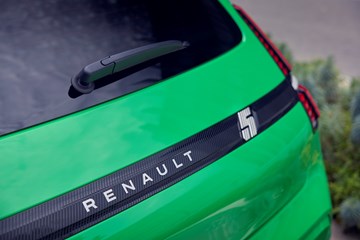 Best small electric cars 2025: Top 10 reviewed and ratedAfter a slow start in the electric cars space, the small car sector is finally catching up – and 2025 marks a turning point. We’re seeing a wave of exciting...
Best small electric cars 2025: Top 10 reviewed and ratedAfter a slow start in the electric cars space, the small car sector is finally catching up – and 2025 marks a turning point. We’re seeing a wave of exciting... -
 Top 10 best Tesla alternatives – if you’re not sold on ElonChoosing the best electric car for your work and have a growing family? It might have been tempting to head straight for a Tesla in the past – after all,...
Top 10 best Tesla alternatives – if you’re not sold on ElonChoosing the best electric car for your work and have a growing family? It might have been tempting to head straight for a Tesla in the past – after all,... -
-
 Updated! Britain's Cheapest electric cars in 2025: affordable EVs tested, compared and ratedElectric cars are getting cheaper, which is great news for those who want to make the switch. The reasons why are varied, but growing demand for the technology in the...
Updated! Britain's Cheapest electric cars in 2025: affordable EVs tested, compared and ratedElectric cars are getting cheaper, which is great news for those who want to make the switch. The reasons why are varied, but growing demand for the technology in the... -
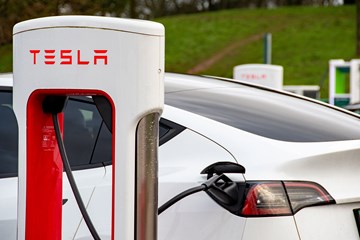 Using Tesla Superchargers in the UK: a guide for all EV driversTesla’s Supercharger network is one of the largest and most advanced EV charging infrastructures in the world, now featuring over 60,000 chargers globally and approximately 1,400 across the UK. While...
Using Tesla Superchargers in the UK: a guide for all EV driversTesla’s Supercharger network is one of the largest and most advanced EV charging infrastructures in the world, now featuring over 60,000 chargers globally and approximately 1,400 across the UK. While... -
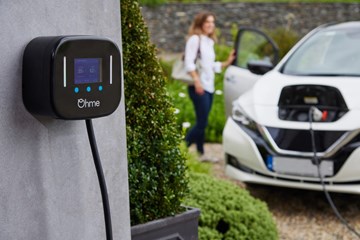 Best EV tariffs for your electric car in 2025One of the main motivations for switching to an electric car is that they can reduce your day-to-day running costs. Recharging a battery can cost a lot less than filling...
Best EV tariffs for your electric car in 2025One of the main motivations for switching to an electric car is that they can reduce your day-to-day running costs. Recharging a battery can cost a lot less than filling... -
-
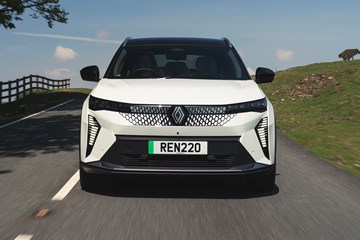 Best Electric Cars to buy in the UK 2025 – the pick of the electric car crop, rated across all prices and sizesElectric cars and the charging infrastructure they plug into are improving every year. Stigmas around EV ownership like range anxiety and high upfront costs are slowly falling by the wayside,...
Best Electric Cars to buy in the UK 2025 – the pick of the electric car crop, rated across all prices and sizesElectric cars and the charging infrastructure they plug into are improving every year. Stigmas around EV ownership like range anxiety and high upfront costs are slowly falling by the wayside,... -
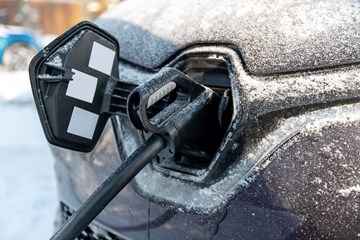 EV range in winter: how electric cars perform in cold conditionsThe driving range of electric cars is perhaps the most important stumbling block for those raised on a diet of easily refuelled petrol or diesel cars. Many motorists forget to...
EV range in winter: how electric cars perform in cold conditionsThe driving range of electric cars is perhaps the most important stumbling block for those raised on a diet of easily refuelled petrol or diesel cars. Many motorists forget to... -
-
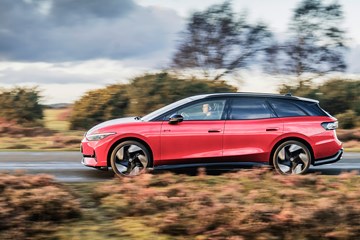 Best electric estate cars 2025 – family wagons with practicality, green smarts and a dash of styleAs the number of really good electric cars has increased, so too has the number of different types of electric vehicle (EV). A few years ago you’d have found hardly...
Best electric estate cars 2025 – family wagons with practicality, green smarts and a dash of styleAs the number of really good electric cars has increased, so too has the number of different types of electric vehicle (EV). A few years ago you’d have found hardly... -
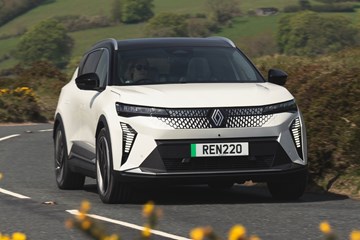 Best electric family cars 2025 - EVs perfect for everything life throws at themIf you think your main family motor has to be petrol or diesel, you’re living firmly in the past. The best electric cars will do in excess of 300 miles...
Best electric family cars 2025 - EVs perfect for everything life throws at themIf you think your main family motor has to be petrol or diesel, you’re living firmly in the past. The best electric cars will do in excess of 300 miles... -
 Best seven-seat electric cars 2025 – the pick of the plug-in family shuttlesSeven-seaters were once massive boxes on wheels with big, uneconomical engines. But now the market is awash with zero-emission vehicles. And better yet, the best seven-seat electric cars come in...
Best seven-seat electric cars 2025 – the pick of the plug-in family shuttlesSeven-seaters were once massive boxes on wheels with big, uneconomical engines. But now the market is awash with zero-emission vehicles. And better yet, the best seven-seat electric cars come in... -
-
 Electric car range: understanding how far an EV can goIf you’re thinking about buying a new electric vehicle (EV), the chances are you’ll be paying especially close attention to driving range. Fortunately, after more than a decade of mainstream...
Electric car range: understanding how far an EV can goIf you’re thinking about buying a new electric vehicle (EV), the chances are you’ll be paying especially close attention to driving range. Fortunately, after more than a decade of mainstream... -
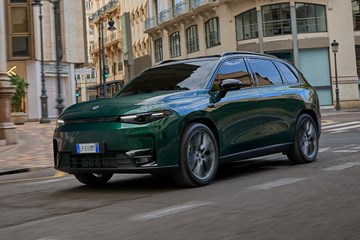 Leapmotor electric cars: everything you need to knowLeapmotor is a Chinese electric vehicle manufacturer with plenty of ambition. The fledgling brand says it’s in this for the long haul – we’re ‘thinking in decades’ Leapmotor international wing...
Leapmotor electric cars: everything you need to knowLeapmotor is a Chinese electric vehicle manufacturer with plenty of ambition. The fledgling brand says it’s in this for the long haul – we’re ‘thinking in decades’ Leapmotor international wing... -
-
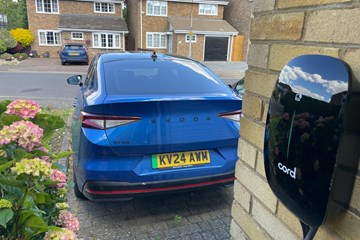 How much does installing a home EV charger cost? We go through the processEven as electric cars increase in mainstream visibility, there is a strong sense of ‘It’s easy if you know how’ about buying and owning one. Getting a home EV charger...
How much does installing a home EV charger cost? We go through the processEven as electric cars increase in mainstream visibility, there is a strong sense of ‘It’s easy if you know how’ about buying and owning one. Getting a home EV charger... -
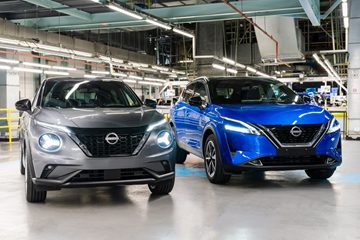 Nissan electric cars: everything you need to knowThese are important times for Nissan. It became the original pathfinder for mass electric vehicle (EV) production after the launch of the Leaf back in 2009 – the first series-produced...
Nissan electric cars: everything you need to knowThese are important times for Nissan. It became the original pathfinder for mass electric vehicle (EV) production after the launch of the Leaf back in 2009 – the first series-produced... -
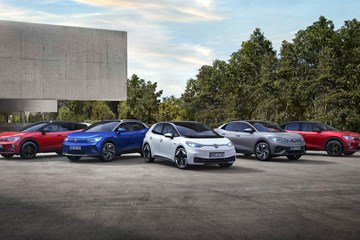 Volkswagen electric cars - everything you need to knowWhile Volkswagen has experimented with electric cars for decades, it wasn’t until 2014 that it launched its first production models that you could easily buy in a showroom. What’s more,...
Volkswagen electric cars - everything you need to knowWhile Volkswagen has experimented with electric cars for decades, it wasn’t until 2014 that it launched its first production models that you could easily buy in a showroom. What’s more,... -
-
 Best EV deals – 2024's eye-catching electric car discountsWe like electric cars at Parkers, but we recognise that many of them simply cost too much for the kind of car they are. At a time when household incomes...
Best EV deals – 2024's eye-catching electric car discountsWe like electric cars at Parkers, but we recognise that many of them simply cost too much for the kind of car they are. At a time when household incomes... -
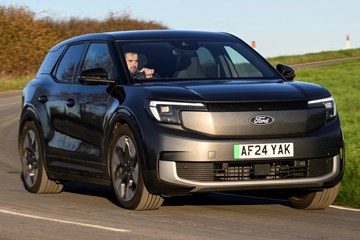 The most efficient electric cars of 2025EVs offer many benefits. The best electric cars are quieter than petrol and diesel equivalents, they’re quicker off the mark and produce zero tailpipe emissions, so they’re kinder to the...
The most efficient electric cars of 2025EVs offer many benefits. The best electric cars are quieter than petrol and diesel equivalents, they’re quicker off the mark and produce zero tailpipe emissions, so they’re kinder to the... -
-
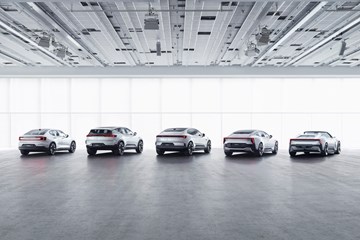 Polestar electric cars – everything you need to knowPolestar is a relatively recent addition to the electric car market – and it underwent a drastic change in direction to arrive where it is today. Before it started building...
Polestar electric cars – everything you need to knowPolestar is a relatively recent addition to the electric car market – and it underwent a drastic change in direction to arrive where it is today. Before it started building... -
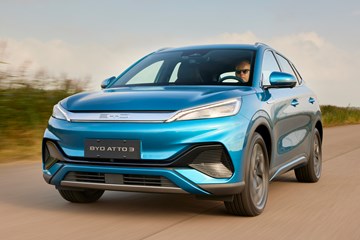 BYD electric cars – everything you need to knowBYD is another westwardly expanding Chinese electric vehicle manufacturer. It’s hoping to drag buyers away from brands such as Tesla, Volkswagen and Kia with its value-driven pricing and clever, safety-focused...
BYD electric cars – everything you need to knowBYD is another westwardly expanding Chinese electric vehicle manufacturer. It’s hoping to drag buyers away from brands such as Tesla, Volkswagen and Kia with its value-driven pricing and clever, safety-focused... -
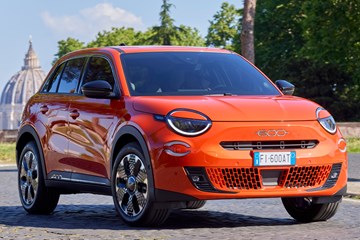 Fiat electric cars – everything you need to knowFiat only recently jumped on the electric car bandwagon. The brand launched its first EV, the Fiat 500e, in 2020. It then took three years for the company to broaden...
Fiat electric cars – everything you need to knowFiat only recently jumped on the electric car bandwagon. The brand launched its first EV, the Fiat 500e, in 2020. It then took three years for the company to broaden... -
Most popular articles
-
 Best electric estate cars 2025 – family wagons with practicality, green smarts and a dash of styleAs the number of really good electric cars has increased, so too has the number of different types of electric vehicle (EV). A few years ago you’d have found hardly...
Best electric estate cars 2025 – family wagons with practicality, green smarts and a dash of styleAs the number of really good electric cars has increased, so too has the number of different types of electric vehicle (EV). A few years ago you’d have found hardly... -
 Best Electric Cars to buy in the UK 2025 – the pick of the electric car crop, rated across all prices and sizesElectric cars and the charging infrastructure they plug into are improving every year. Stigmas around EV ownership like range anxiety and high upfront costs are slowly falling by the wayside,...
Best Electric Cars to buy in the UK 2025 – the pick of the electric car crop, rated across all prices and sizesElectric cars and the charging infrastructure they plug into are improving every year. Stigmas around EV ownership like range anxiety and high upfront costs are slowly falling by the wayside,... -
-
 Updated! Britain's Cheapest electric cars in 2025: affordable EVs tested, compared and ratedElectric cars are getting cheaper, which is great news for those who want to make the switch. The reasons why are varied, but growing demand for the technology in the...
Updated! Britain's Cheapest electric cars in 2025: affordable EVs tested, compared and ratedElectric cars are getting cheaper, which is great news for those who want to make the switch. The reasons why are varied, but growing demand for the technology in the... -
 Best EV tariffs for your electric car in 2025One of the main motivations for switching to an electric car is that they can reduce your day-to-day running costs. Recharging a battery can cost a lot less than filling...
Best EV tariffs for your electric car in 2025One of the main motivations for switching to an electric car is that they can reduce your day-to-day running costs. Recharging a battery can cost a lot less than filling... -
 Portable electric vehicle chargers explainedRunning low on battery with no charging point in sight? That’s where portable EV chargers come in. These handy devices promise to give your electric car a boost wherever you...
Portable electric vehicle chargers explainedRunning low on battery with no charging point in sight? That’s where portable EV chargers come in. These handy devices promise to give your electric car a boost wherever you... -
-
 Top 10 best Tesla alternatives – if you’re not sold on ElonChoosing the best electric car for your work and have a growing family? It might have been tempting to head straight for a Tesla in the past – after all,...
Top 10 best Tesla alternatives – if you’re not sold on ElonChoosing the best electric car for your work and have a growing family? It might have been tempting to head straight for a Tesla in the past – after all,... -
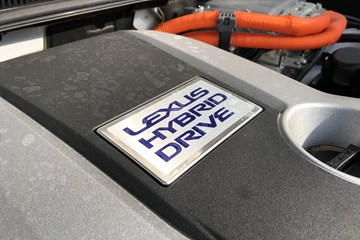 The pros and cons of hybrid carsJust 10 years ago, if your main priority in a new car was low running costs, you would probably have gone for a diesel. Choose the right model and you’d...
The pros and cons of hybrid carsJust 10 years ago, if your main priority in a new car was low running costs, you would probably have gone for a diesel. Choose the right model and you’d... -
-
 Best electric family cars 2025 - EVs perfect for everything life throws at themIf you think your main family motor has to be petrol or diesel, you’re living firmly in the past. The best electric cars will do in excess of 300 miles...
Best electric family cars 2025 - EVs perfect for everything life throws at themIf you think your main family motor has to be petrol or diesel, you’re living firmly in the past. The best electric cars will do in excess of 300 miles... -
 The most efficient electric cars of 2025EVs offer many benefits. The best electric cars are quieter than petrol and diesel equivalents, they’re quicker off the mark and produce zero tailpipe emissions, so they’re kinder to the...
The most efficient electric cars of 2025EVs offer many benefits. The best electric cars are quieter than petrol and diesel equivalents, they’re quicker off the mark and produce zero tailpipe emissions, so they’re kinder to the... -
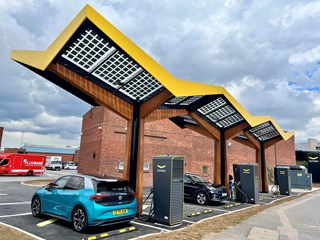 Public EV Charging: A Complete GuideThe market for new – and used – electric cars (EVs) in the UK may be rather volatile at the moment, but the public EV charging infrastructure to support them...
Public EV Charging: A Complete GuideThe market for new – and used – electric cars (EVs) in the UK may be rather volatile at the moment, but the public EV charging infrastructure to support them... -
-
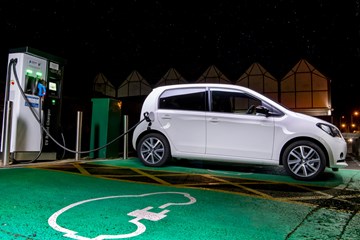 Best used electric cars for under £10,000Tempted by zero-emissions motoring but not willing to fork out the substantial price commanded by one of the best new electric cars? Well, you’re in luck – because the expansion...
Best used electric cars for under £10,000Tempted by zero-emissions motoring but not willing to fork out the substantial price commanded by one of the best new electric cars? Well, you’re in luck – because the expansion... -
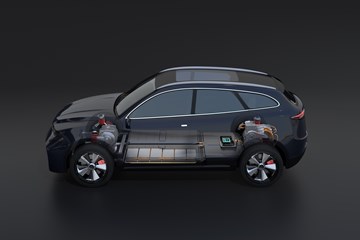 How much does it cost to change an EV battery?Electric cars are growing in popularity but some key concerns remain. In addition to how long it takes to charge and where you can charge, you might wonder about the...
How much does it cost to change an EV battery?Electric cars are growing in popularity but some key concerns remain. In addition to how long it takes to charge and where you can charge, you might wonder about the... -
-
 Best small electric cars 2025: Top 10 reviewed and ratedAfter a slow start in the electric cars space, the small car sector is finally catching up – and 2025 marks a turning point. We’re seeing a wave of exciting...
Best small electric cars 2025: Top 10 reviewed and ratedAfter a slow start in the electric cars space, the small car sector is finally catching up – and 2025 marks a turning point. We’re seeing a wave of exciting... -
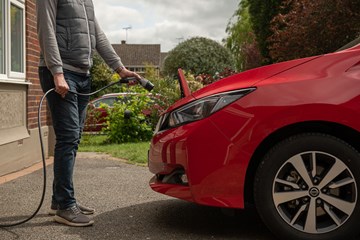 Are electric cars more reliable than petrol or diesel?The latest technology often takes a while to become as reliable as what it replaces. It was years before you could count on your mobile phone to make a call...
Are electric cars more reliable than petrol or diesel?The latest technology often takes a while to become as reliable as what it replaces. It was years before you could count on your mobile phone to make a call... -
 EV range in winter: how electric cars perform in cold conditionsThe driving range of electric cars is perhaps the most important stumbling block for those raised on a diet of easily refuelled petrol or diesel cars. Many motorists forget to...
EV range in winter: how electric cars perform in cold conditionsThe driving range of electric cars is perhaps the most important stumbling block for those raised on a diet of easily refuelled petrol or diesel cars. Many motorists forget to... -
-
 BYD electric cars – everything you need to knowBYD is another westwardly expanding Chinese electric vehicle manufacturer. It’s hoping to drag buyers away from brands such as Tesla, Volkswagen and Kia with its value-driven pricing and clever, safety-focused...
BYD electric cars – everything you need to knowBYD is another westwardly expanding Chinese electric vehicle manufacturer. It’s hoping to drag buyers away from brands such as Tesla, Volkswagen and Kia with its value-driven pricing and clever, safety-focused... -
 Using Tesla Superchargers in the UK: a guide for all EV driversTesla’s Supercharger network is one of the largest and most advanced EV charging infrastructures in the world, now featuring over 60,000 chargers globally and approximately 1,400 across the UK. While...
Using Tesla Superchargers in the UK: a guide for all EV driversTesla’s Supercharger network is one of the largest and most advanced EV charging infrastructures in the world, now featuring over 60,000 chargers globally and approximately 1,400 across the UK. While... -
-
 Best EV deals – 2024's eye-catching electric car discountsWe like electric cars at Parkers, but we recognise that many of them simply cost too much for the kind of car they are. At a time when household incomes...
Best EV deals – 2024's eye-catching electric car discountsWe like electric cars at Parkers, but we recognise that many of them simply cost too much for the kind of car they are. At a time when household incomes... -
 How much does installing a home EV charger cost? We go through the processEven as electric cars increase in mainstream visibility, there is a strong sense of ‘It’s easy if you know how’ about buying and owning one. Getting a home EV charger...
How much does installing a home EV charger cost? We go through the processEven as electric cars increase in mainstream visibility, there is a strong sense of ‘It’s easy if you know how’ about buying and owning one. Getting a home EV charger...
What is an electric car (EV)?
An Electric Vehicle, also known as an EV, or sometimes BEV (Battery Electric Vehicle), uses at least one electric motor as its only source of propulsion. An EV is powered by electricity contained in a battery pack, which is stored in the car, generally under the boot or interior.
Electric cars can be topped up by a regular three-pin socket, but for the most part this is done by using a dedicated chargepoint. These can be installed at your home assuming your domestic wiring is up to it. An increasing number of public and workplace charging stations are being rolled out across the country, and this is set to continue as EVs become more popular.
Electric Vehicles Frequently Asked Questions (FAQs)
How much money do you save now with your EV?
In terms of buying a new Electric Vehicle, the cash and PCP prices are above what you’d expect to pay for an equivalent petrol- or diesel-powered car. Having said that, currently, there aren’t too many models out there that are available in Internal Combustion Engined (ICE) and EV forms.
But taking the Golf as a typical example, the EV version is around 50% more expensive than a 1.0-litre TSI SE per month on PCP finance. The gap is much closer on Personal Leasing (PCH), but it’s still stacked in favour of the ICE car (although the gap is closing).
Do EVs drive differently to conventional vehicles?
Yes, but not as different as you might think. And most importantly, most people find that once they’ve travelled a few miles in an EV, they no longer notice anything’s changed. If you compare an EV with a typical automatic petrol, and the differences are quite subtle.
The most obvious contrast between the two is when you fire them up – the EV is completely silent. Although it sounds obvious, this takes some getting used to in the first instance. What you will notice, though, is when you jump back into a petrol or diesel car, they will feel slow, unrefined and dead on their feet.
Can electric car batteries be recycled?
Yes. All new EVs sold since the 1990s have been powered by Lithium-Ion (Li-On) batteries, which have been recyclable for years. The old days when electric vehicles such as milk floats and some ancient electric cars were powered by Lead Acid batteries have long gone. These are recycled just like your mobile phone or laptop batteries, just on a larger scale.
Most homes in the UK use about 2kWh of energy in a day – this varies, of course, but EV batteries are being recycled by firms like Tesla to store energy from local renewable/environmental sources to be used when grid demand is higher, or sources like solar or wind power might not be able to power the development.
How far can a typical EV travel on a single charge?
This really depends on the car that you’re considering looking at, and what type of journeys you’re using it for. For instance, the Volkswagen e-Golf can vary in its range between 80 miles on the motorway in deep winter to 140 miles of gentle summer driving around the city. This article offers more detail about electric car range.
How do I know an electric car is right for me?
How long is a piece of string? First question to ask is how many miles you’re doing. If you find yourself on the motorway most days, and time is of the essence, then EVs probably aren’t for you. Equally, if you live in the middle of a city or don’t have access to a driveway for your own charger, a workplace charger, or a local chargepoint, then you might struggle.
Just because you can't charge at home doesn't mean you shouldn't have an EV, however. City-dwelling Tesla owners are getting into the habit of parking up at home and using nearby Superchargers to top up either at the end or beginning of their previous journeys. And now ZipCharge Go is here, there are additional solutions for urban EV drivers.
How do I charge my EV?
There are several ways of getting juice into your EV. If you're at home, you can plug in via a traditional three-pin socket and use the lead that came with the car. However, that takes ages (more than 20 hours for something like a Tesla) and should be considered a last resort. If you get a home chargepoint fitted, you'll need decent electrics, and a recommended chargepoint installer.
If you're charging elsewhere, you'll be looking at one of the public chargepoints across the country. Currently, the UK infrastructure is growing, but it still has some way to go, if it wants to become as convenient as petrol or diesel. The good news is that these chargepoints are contained in convenient parking bays for EVs only. You can find your nearest public charger using an app or website such as Zap Map.
What happens if I run out of power?
The best advice is not to run out if you can help it. If you do, it will go slowly, shutting down all non-essential features. You'll be warned of the need to recharge at about 20% of the battery. Let it trickle to 1% and the car will crawl, and then stop.
You'll be going some to run an EV out of juice, such are the number of warnings you get. But it's worth knowing what to do should the worst happen. First things first, if you're down to your last 20% you should start looking for somewhere to top up - Zap Map is an excellent tool for this if your in-built system isn't up to scratch.
Do EVs cost more than petrol and diesel cars?
Prices are going down but there are no two ways about it – an electric vehicle is currently more expensive than a comparable petrol or diesel car, whether buying outright or financing via PCP or lease.
What are resale values like of EVs?
The residual values for electric vehicles are not very strong, but are improving, so if you buy outright then you'll suffer heavy depreciation. This also affects a fleet manager's decision on whether to introduce EVs on to the fleet. This will change in the coming years as EVs become more accepted.
Are EVs really better for the environment?
There’s plenty of debate surrounding this but in short, electric vehicles are more environmentally friendly than a petrol or diesel car. While there’s plenty of CO2 involved in building them, particularly in mining the rare earth metals in the batteries, this is wiped out in just a few short years. The batteries are almost totally recyclable as well, and we expect to see this improve in years to come as well.
EVs produce zero local emissions – that is to say, no fumes or exhaust like a combustion-engined car – and even if the electricity that powers them comes from a dirty source, total emissions are reduced compared to even the most efficient petrol or diesel car.
Better yet, an EV is as eco-friendly as the grid that powers it – and as the UK generates more of its electricity from renewable sources, EVs will become greener too. When’s the last time a diesel car became less polluting as it aged?

